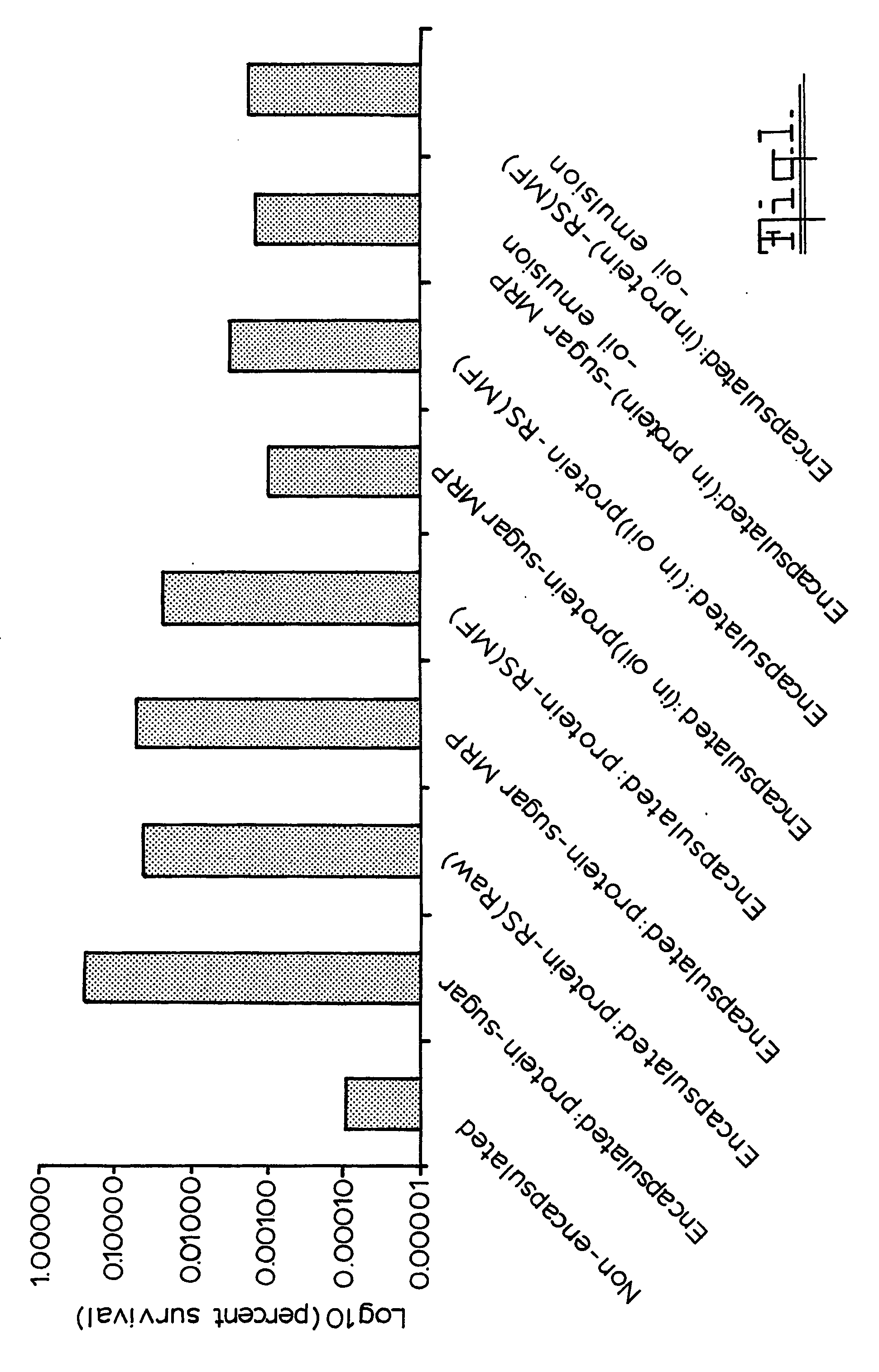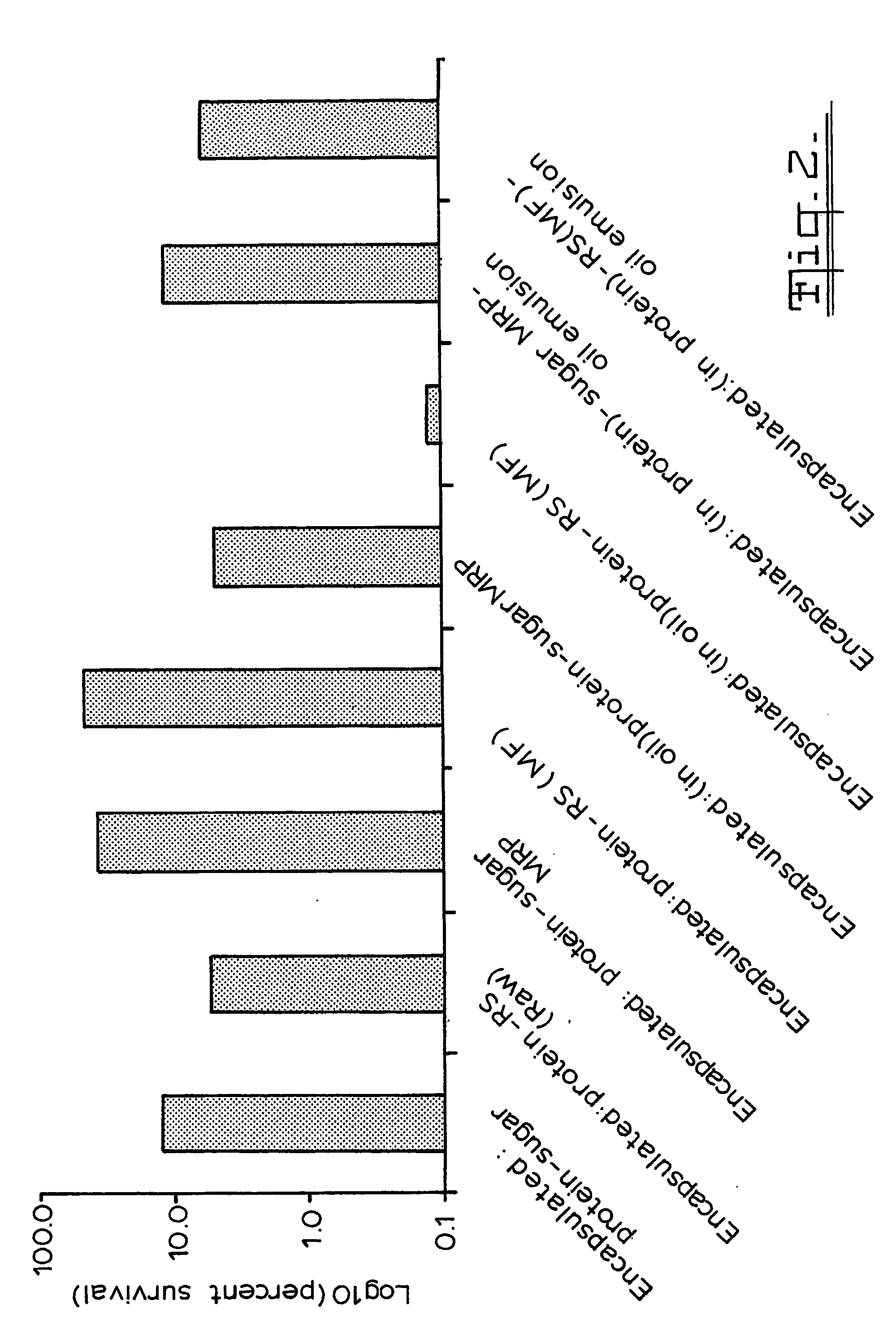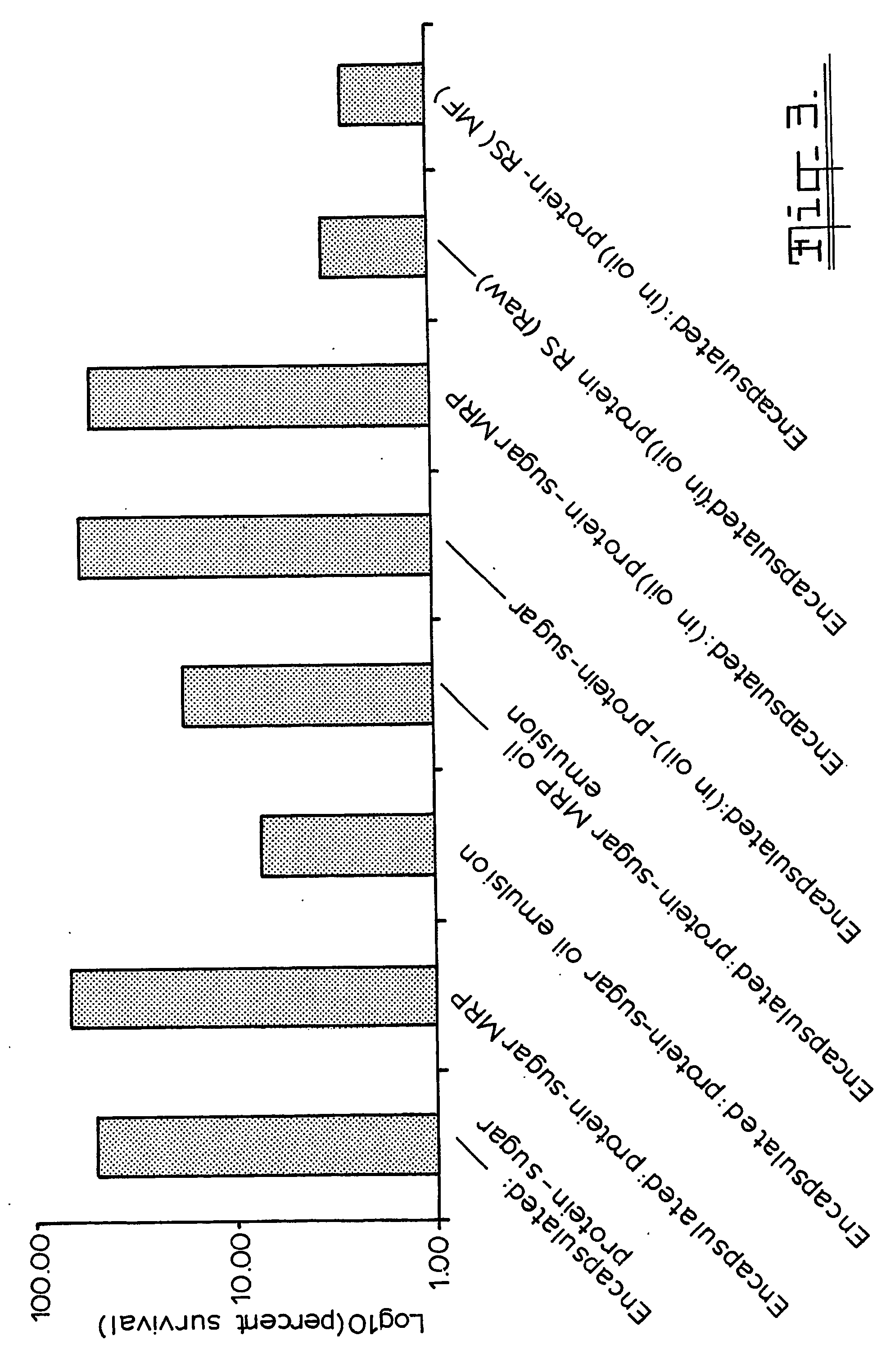Probiotic storage and delivery
a technology of probiotics and bacteria, applied in the field of probiotic storage and delivery, can solve the problems of no probiotic strain dose response curve, no information on human performance published in peer-reviewed journals, and further losses
- Summary
- Abstract
- Description
- Claims
- Application Information
AI Technical Summary
Benefits of technology
Problems solved by technology
Method used
Image
Examples
formulation examples
PROCESSING AND FORMULATION EXAMPLES
Strategy 1
Example 1 (Encapsulated: Protein-Sugar)
[0063] Freeze dried probiotic bacteria encapsulated in protein-sugar matrix
Processing Steps
[0064] Prepare a mixture containing sodium caseinate, oligosaccharide and dried glucose syrup (Cas-oligo-DGS) solution at 60° C. Cool down to 10° C. Disperse freeze dried bacteria into the solution using a mixer. Spray dry at 160 / 65° C. Ti / To.
Ingredient% in powder% in emulsionFormulation 1Freeze dried bacteria 20% 5.9%Cas-Oligo-DGS 80% 23.5%BlendWater 70.6%Total100%100.0%Formulation 2Freeze dried bacteria11.8% 2.9%Cas-Oligo-DGS88.2% 22.1%BlendWater 75%Total 100%100.0%
example 2 (
Encapsulated: Protein-Sugar MRP)
[0065] Freeze dried probiotic bacteria encapsulated in heat reacted protein-sugar matrix
Processing Steps
[0066] Prepare a mixture containing sodium caseinate, oligosaccharide and dried glucose syrup (Cas-oligo-DGS) solution at 60° C. Heat mixture at 98° C. for 30 min Cool down to 10° C. Disperse freeze dried bacteria into the reacted solution using a mixer. Spray dry at 160 / 65° C. Ti / To.
Ingredient% in powder% in emulsionFormulation 1Freeze dried bacteria 20% 5.9%Heat processed 80% 23.5%Cas-Oligo-DGS BlendWater 70.6%Total100%100.0%Formulation 2Freeze dried bacteria11.8% 2.9%Heat processed88.2% 22.1%Cas-Oligo-OGS BlendWater 75%Total 100%100.0%
example 3 (
Encapsulated: Protein-Sugar-RS(Raw)
[0067] Freeze dried probiotic bacteria encapsulated in protein-sugar-high amylose starch matrix
Processing Steps
[0068] Prepare a 15% w / w sodium caseinate solution at 60° C., then add the sugar.
[0069] Prepare a 10% w / w Hylon VII dispersion at 60° C. Mix the sodium caseinate-sugar solution and Hylon VII dispersion together. Cool down to 10° C. Add the freeze dried bacteria into the protein-sugar-starch mixture using a mixer. Spray dry at 160 / 65° C. Ti / To.
Ingredient% in powder% in emulsionFreeze dried bacteria11.8%2.2%Na Caseinate29.4%5.4%Oligosaccharide29.4%5.4%Water81.5%Hylon VII29.4%5.4%Total100.0%100.0%
PUM
| Property | Measurement | Unit |
|---|---|---|
| Electrical resistance | aaaaa | aaaaa |
Abstract
Description
Claims
Application Information
 Login to View More
Login to View More - R&D
- Intellectual Property
- Life Sciences
- Materials
- Tech Scout
- Unparalleled Data Quality
- Higher Quality Content
- 60% Fewer Hallucinations
Browse by: Latest US Patents, China's latest patents, Technical Efficacy Thesaurus, Application Domain, Technology Topic, Popular Technical Reports.
© 2025 PatSnap. All rights reserved.Legal|Privacy policy|Modern Slavery Act Transparency Statement|Sitemap|About US| Contact US: help@patsnap.com



